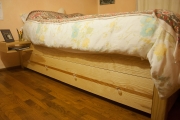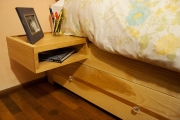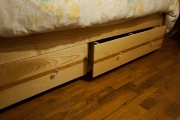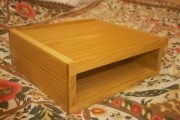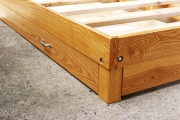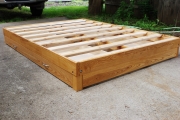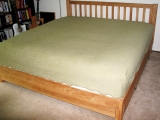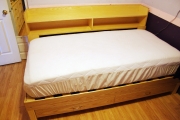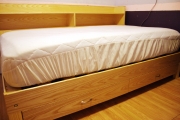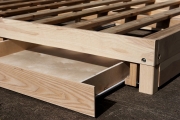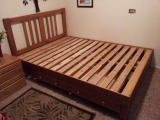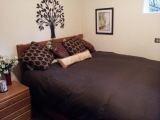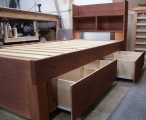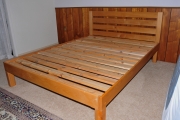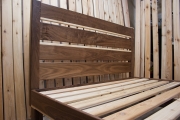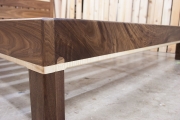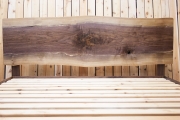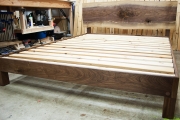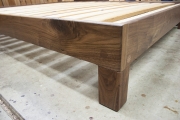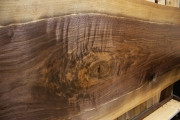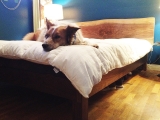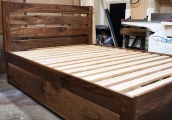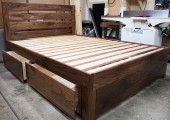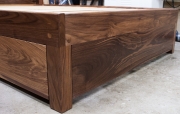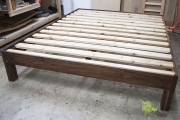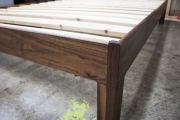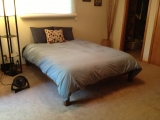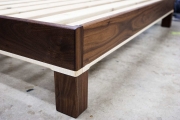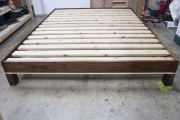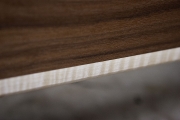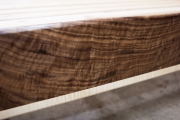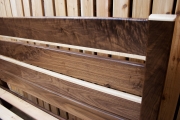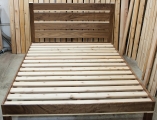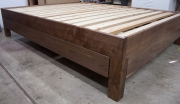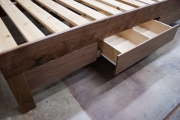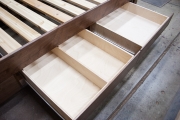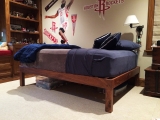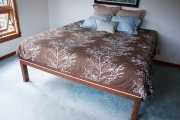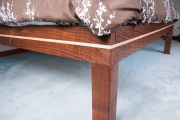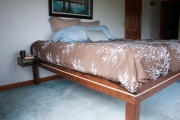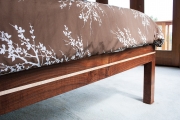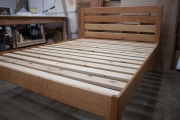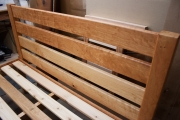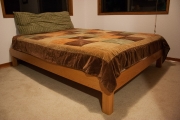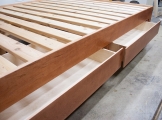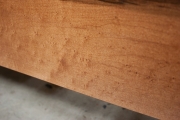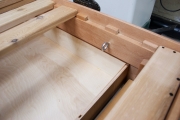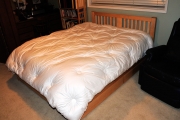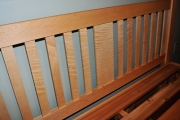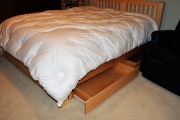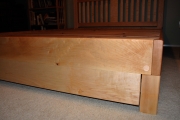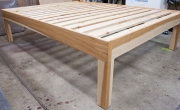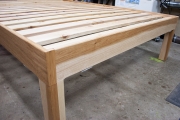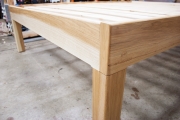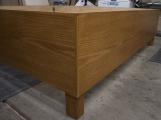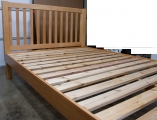Our bed frames can be made of any available domestic wood species for a more high-end, custom look. All hardwood frames come with a finish by default, the ends of the long rails get wooden “caps” to cover the end grain, the screws for the center support(s) are hidden, and the ends of the long rails get rounded off. From the light, grain-rich color of ash to the classic chocolate-brown look of walnut and everything in between, a hardwood bed frame is designed to last a long time and look great doing it.
Please note that all hardwood frames now come with 15 slats and the bolt holes plugged so the bolts are no longer visible from the outside. This new feature will be more apparent as new frames are made and the photos are uploaded here.
Pricing: Due to the number of options available and the ever-changing prices of hardwood lumber, prices for a particular bed frame are not listed on this site, so please contact us for more information. With the exception of walnut, the difference in price between one type of wood and another is relatively small compared to the price of the whole bed frame, so while ash is the least expensive wood, it isn’t a lot cheaper than, say, cherry.
Ash
Ash is harder than red oak, has minimal color change over time, and prominent grain. It is one of the lightest-colored woods, though most boards have a mix of the very light and darker wood in them.
Alder
Alder is extremely soft and lightweight. Customers like it because it looks very similar to cherry but costs much less. It does not darken over time the way cherry does. It’s a pain to work with (it has lots of internal stress and the sawdust is “sticky”) and usually has small flecks of darker-colored wood here and there.
Walnut
The king of domestic woods, walnut is relatively hard and very dark. It goes well with just about anything. Over a long period of time (maybe up to a century), walnut will lighten significantly, ending up at a color that is somewhat similar to how cherry looks before it darkens. It’s the most expensive wood we use (and Bryce’s favorite) but has a personality that’s hard to match.
My Own Bed Frame
The images below are of the king frame I’ve made for myself and my wife. I had to build it in a hurry to get the house sold so it’s somewhat of a work in progress. It’s highly figured Oregon walnut with a curly maple stripe. The headboard will be in the shape of a tree, with crawling roots inlaid down the sides and drawers. It’s very rare to see western walnut that looks this good; every other batch I’ve seen has been full of holes and knots and didn’t have much figure. I’ll gladly make your bed frame out of it if it’s available but I’m keeping my stockpile for myself!
Cherry
A classic wood with beautiful grain with golden overtones, cherry is one of the woods that undergoes a significant color change. It also often has mild figure. The color of freshly-milled cherry is somewhat similar to aged maple, with more red. Cherry will, with time, develop a lovely deep red color with a hint of brown; all of the photos of cherry bed frames on here are from before the wood aged to its final, darker color. Because it looks so similar to cherry, some unscrupulous woodworkers have been known to substitute alder but charge the cherry price, but not us! You’ll definitely be getting solid cherry.
Maple
One of the more well-known woods, maple is very hard and ages to a golden amber color. It can be one of the more highly-figured woods, and curly maple is quite a sight. The slats on the headboard of the lighter-colored maple frame in the photos below are curly maple, with the rest of the frame being regular maple.
Hickory
Axe handles are made of hickory for a reason: it’s the hardest wood in the U.S. It’s almost three times as hard as fir and about 28% harder than maple. It can have many striations of darker wood mixed in with the lighter parts but in general, the wood I can get for bed frames is much more uniform.
Other:
One of the frames in the photos below is a “box” made of oak plywood with a standard fir frame inside, and a simple plywood headboard. The exposed edges of the plywood are covered with solid oak and the legs are also solid oak. The other frame is CVG (Clear Vertical Grain) fir. I didn’t consider its source until I had already started building it; it’s old-growth wood and I’m not okay with logging very old forests, so unless I can find a source of salvaged wood, I won’t be building any more CVG fir bed frames.

